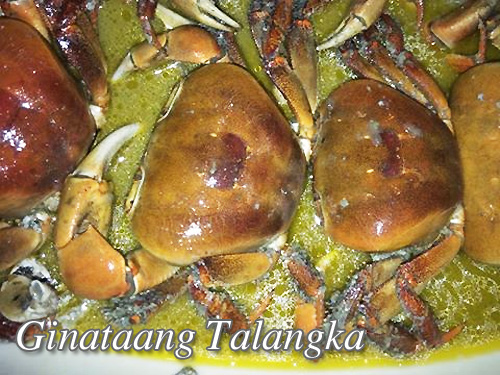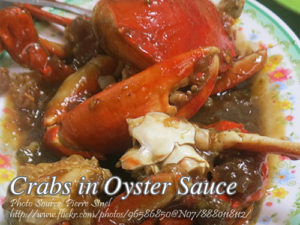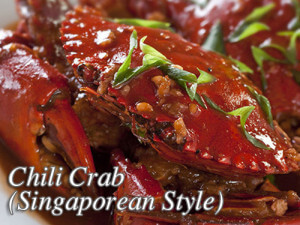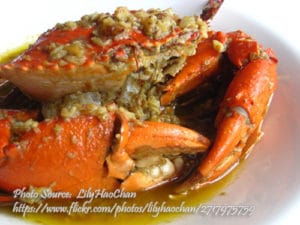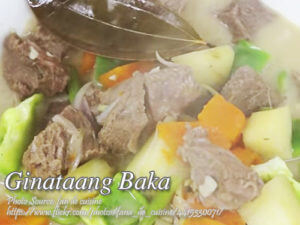It’s surprising to know that very few Filipinos know what is the English term for “talangka”. Those tiny crabs that are sometimes mistaken as baby crabs. Some say that talangka is a mini version of “alimango” (mud crab). Some call it mini crab and I also thought the correct term was crablets. But with a little research I found out that the correct English for talangka is “Asian shore crab” because of the square shaped top shell. This ginataang talangka is one of the many Filipino coconut milk based dishes and I’m sure you will love it.
Ginataang Talangka: A Humble Crustacean with a Big Flavor
When I was a kid growing up in Sorsogon, there were days when my Lolo Ben would come home from the mangrove swamps, carrying a woven basket full of tiny, squirming crabs. We called them talangka, and honestly, I used to think they were baby alimango. It wasn’t until much later—after a little Googling and asking around—that I learned their real name in English is Asian shore crab. Square-shaped shell, just about the size of a bottle cap, and packed with so much umami that it practically begs to be simmered in coconut milk.
What is Ginataang Talangka?
Ginataang talangka is a traditional Filipino dish that simmers these tiny shore crabs in coconut milk, aromatics, and leafy vegetables like gabi or taro leaves. It’s rich, earthy, and comforting. In our house, this wasn’t an everyday meal—it was something my auntie Luz would make when relatives came over from Manila, or when there was a little extra to spend at the wet market.
The word ginataan means “cooked in coconut milk,” and it’s a technique you’ll find in every corner of the Philippines. From ginataang langka to ginataang manok, using coconut milk turns any dish into a creamy, savory experience that pairs perfectly with warm rice.
The Secret is in the Simmering of Ginataang Talangka
One thing I learned from Tita Luz is to never rush the gata. First, she’d pour in the thin coconut milk—this would act as the base. Then came the ginger, garlic, onion, and green chilies. Letting these ingredients boil together in the coconut milk before adding the vegetables and crabs gives the dish its signature depth.
After about 30 minutes of low simmering with the gabi leaves, she’d add the thick coconut cream. This is when the magic happens. As the sauce thickens and the oil begins to rise, the crab fat starts to mix in, creating that glorious golden sheen on top.
A Filipino Coconut Crab Recipe Rooted in Family
This dish isn’t just about flavor—it’s about memory. I remember when my Kuya Jun visited from Bicol and asked for this crab dish the moment he stepped off the bus. “Wala bang ginataang talangka diyan?” he joked. Of course, Nanay had already soaked the taro leaves the night before.
We cooked it together, laughing about how he once thought MSG stood for “Masarap Gawing Sangkap.” And maybe he wasn’t wrong. We always added a small pinch—because that’s how our Lola did it.
A Short History of Talangka in Filipino Cuisine
Historically, talangka were considered a poor man’s food. Abundant in estuaries and rivers, they were easy to catch and didn’t cost much. But over time, dishes like this one have gained recognition as regional delicacies. In Pampanga and parts of Rizal, talangka is prized for its fat, often pressed into what we call taba ng talangka—a salty, buttery paste that’s spooned over hot rice or used in sauces.
While taba ng talangka is rich and indulgent, ginataang talangka offers a more rustic, wholesome experience. It’s about appreciating the whole crab—shells, claws, and all—steeped in a sauce that’s unmistakably Filipino.
Cooking Tips for Beginners
If this is your first time making shore crab in coconut milk, here are a few pointers:
Start with fresh or well-cleaned crabs. Rinse them thoroughly, especially if they were gathered from muddy waters.
Use both thin and thick coconut milk. The thin milk is for boiling; the thick cream comes at the end to thicken and enrich.
Simmer low and slow. Coconut milk can curdle if boiled too hard, so always use gentle heat.
If you can’t find gabi leaves, spinach or pechay can be decent substitutes, though you’ll miss that subtle earthy bitterness gabi brings.
Why You’ll Love This Crab Dish
This dish is a beautiful contradiction—both luxurious and humble. The creaminess of the coconut, the briny pop from the crabs, and the faint heat from the green chilies create a symphony of flavors that’s best enjoyed with family and a big pot of rice. It’s not just food; it’s a story on a plate.
So next time you spot those little square-shelled crabs at the market, don’t just walk past them. Bring them home. Cook them slow. Make ginataang talangka, and maybe even call your siblings to come over. That’s how memories are made.
Ginataang Talangka
Ingredients
- 30 pcs fresh talangka Asian Shore Crabs
- 10 gabi or taro leaves w/ stalks (shredded, wilted)
- 5 pcs green native pepper jalapeno
- 5 cloves garlic minced
- 2 Tbsp. minced ginger
- 2 mature coconuts (niyog) grated and extract: 1 cup thick coconut milk and 2 cups thin coconut milk
- 1 tsp. MSG or granulated seasoning
- 1 pc medium sized onions minced
- salt to taste
Instructions
How to cook Ginataang Talangka
- Wash shore crabs or talangka and drain.
- In a large pan, put in thin coconut milk and add ginger, garlic, onion, whole green peppers, salt and MSG.
- When coconut milk boils, add gabi leaves and stalks. Simmer in low fire for 30 minutes.
- Pour in thick cream and add the talangka. Cook until sauce thickens and oil comes out.
Notes
Cooking Tips:
Use Fresh Talangka for Maximum Flavor
Always choose live or freshly caught talangka when possible, as these tiny crabs spoil quickly and lose flavor once frozen. The fresher the crabs, the more intense and natural their umami richness will be in the final dish. Rinse them thoroughly in running water to remove grit and mud trapped in their shells.Don’t Rush the Coconut Milk
Let the thin coconut milk simmer slowly with the aromatics to allow the flavors to build gently. Boiling it too fast can cause the milk to curdle or separate, affecting both texture and taste. Adding the thick cream only near the end helps keep the sauce silky and rich.Handle Gabi Leaves with Care
If using fresh gabi leaves, make sure to remove the stems and cook them thoroughly to avoid the itchy sensation they can cause. Simmering them for at least 30 minutes softens the fibers and mellows out their earthy flavor. You can soak them in salted water beforehand as an extra precaution.
